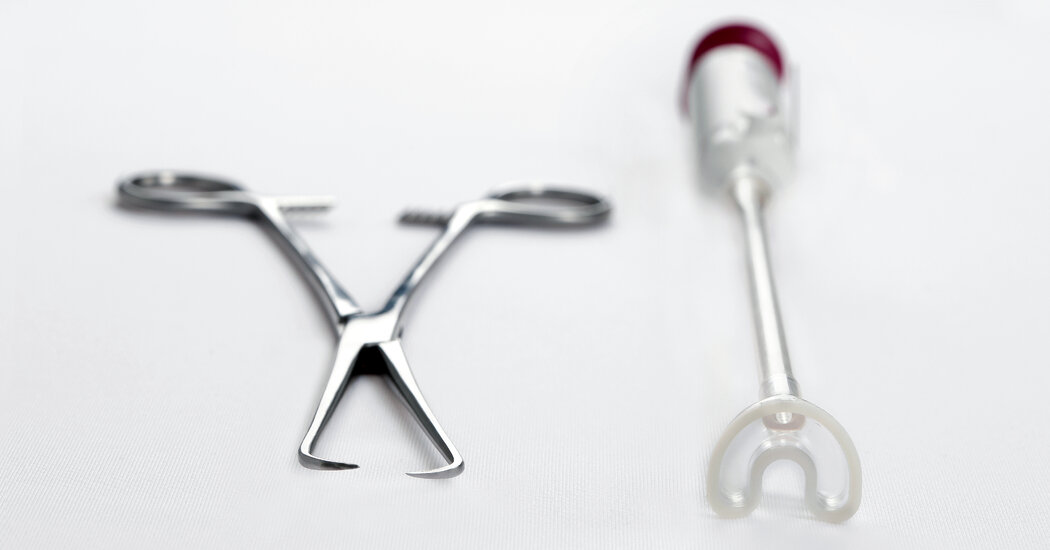The tenaculum might contribute to the discomfort women feel when getting an IUD. One company is testing an alternative.
A growing number of women have opted to get an intrauterine device in recent years, but the pain of the insertion and removal remains a barrier for many. While some clinicians have tried pain killers or numbing agents, the pain-relief options most commonly offered are often insufficient.
A new device, described in a presentation this week at the annual meeting of the American College of Obstetricians and Gynecologists, attempts to reduce the pain of IUD placement.
The tool uses suction to grasp the cervix during the IUD insertion procedure. It was designed as an alternative to a widely used device, called a tenaculum, which looks like a pair of scissors tipped with hooks. Versions of the tenaculum date back to before the Civil War, when it was most likely used to extract bullets from wounds.
The new device, called Carevix, is still being tested, and it’s not yet clear just how effective it is. But it’s an attempt to answer a question that gynecologists and patients have long wondered: Is there a way to make getting an IUD, a highly reliable form of contraception, more bearable?
IUD insertion consists of two main components: grabbing and pulling the cervix to straighten out the uterus, and then inserting the device. The tenaculum is used to grab the cervix and is so sharp that it can “literally poke holes,” said Dr. Alissa Conklin, an assistant professor of clinical obstetrics and gynecology at Indiana University School of Medicine, contributing to the pain of an IUD procedure. The holes it makes in the cervix are small and they occasionally bleed, she added.
Dr. Conklin is working on a clinical trial, funded by Aspivix, the medical device company that made the Carevix. She is studying the device’s effectiveness and whether it reduced perceived pain among patients at her clinic.
